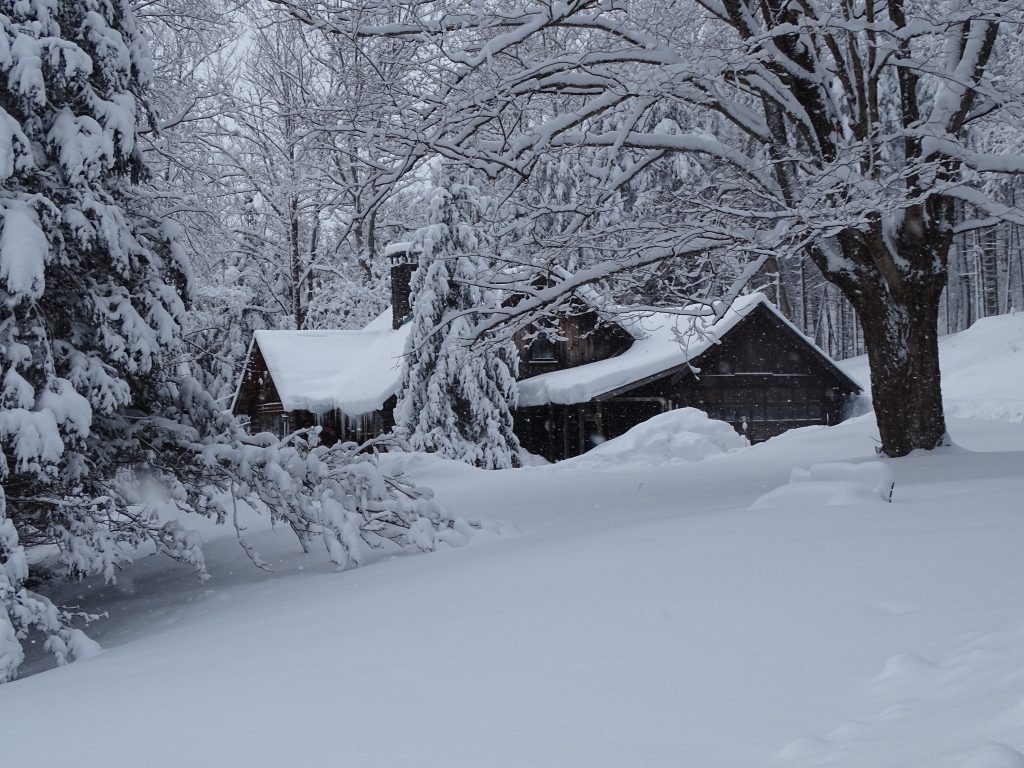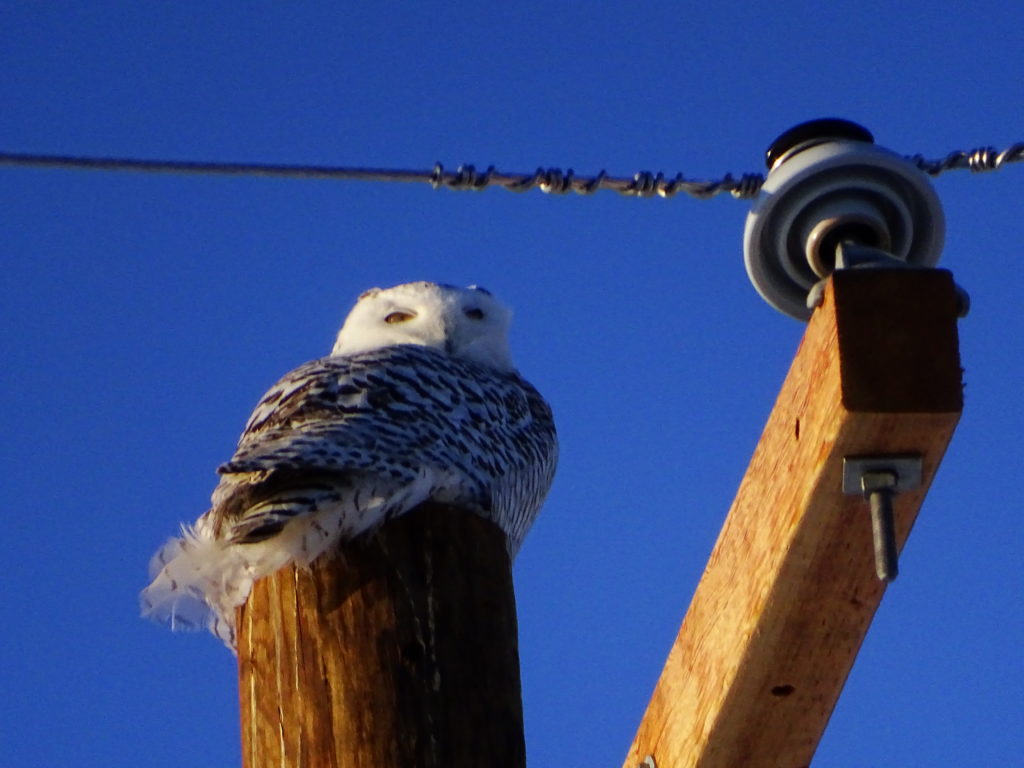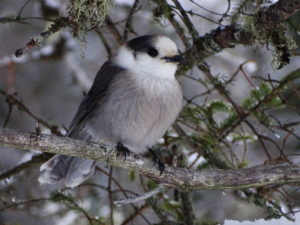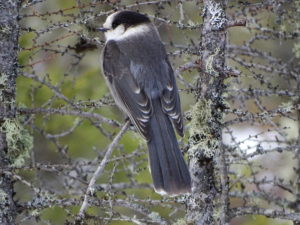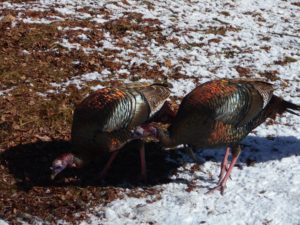 Wild Turkeys have made a spectacular comeback in the Adirondack Mountains. When I moved here in the mid-1970s Wild Turkeys had been hunted out of existence. Now we often see them trooping through our yard in the summer followed by a brood of fuzzy young ones.
Wild Turkeys have made a spectacular comeback in the Adirondack Mountains. When I moved here in the mid-1970s Wild Turkeys had been hunted out of existence. Now we often see them trooping through our yard in the summer followed by a brood of fuzzy young ones.
This winter a small flock of about six has discovered our bird feeders. They peck and scratch in the snow looking for dropped seeds. One enterprising male was even spotted standing on a snow bank, stretching up to pick seeds out of my “Squirrel-Proof” chickadee feeder. On cold days we toss an extra cup of seed and corn on the ground for them. They’ve learned to come running when they hear the door open.
Turkeys prefer to walk or run, but when threatened they can fly. The great whoosh of feathers when they take off is enough startle any would-by predators.
They are ground feeders, eating seeds, nuts, tender evergreen buds, and the occasional snail, salamander, or insect. They roost in trees at night, but nest on the ground with the females providing all the care for the young.
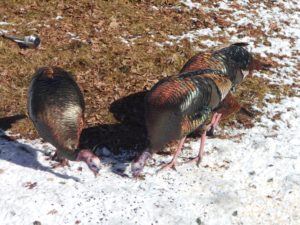 Although they look dark brown in the forest, when the sun hits them they blaze with metallic bronzes, greens, and gold. I’ve made Turkeys before and it’s a challenge to carve their fanned tails and extended wings. It’s especially tricky to capture the iridescence of their feathers. I’ve found brushing bronzing powders over the final nearly dry paint works the best. In the meantime, they put on a pretty good show during the long winter.
Although they look dark brown in the forest, when the sun hits them they blaze with metallic bronzes, greens, and gold. I’ve made Turkeys before and it’s a challenge to carve their fanned tails and extended wings. It’s especially tricky to capture the iridescence of their feathers. I’ve found brushing bronzing powders over the final nearly dry paint works the best. In the meantime, they put on a pretty good show during the long winter.
